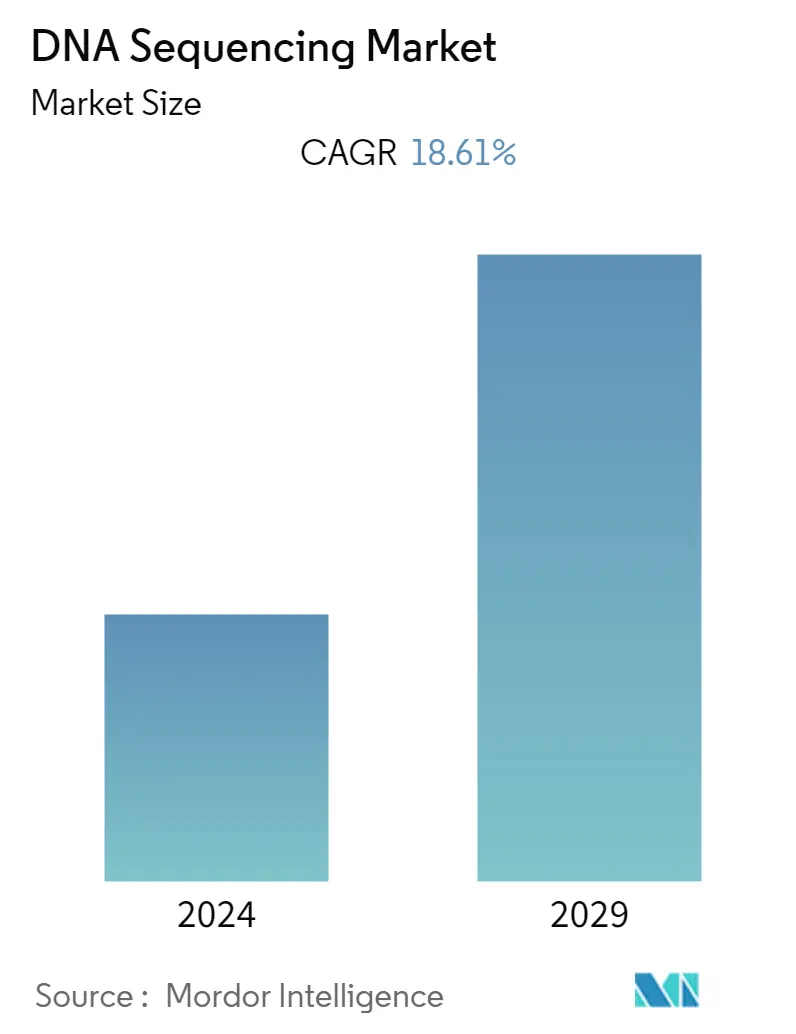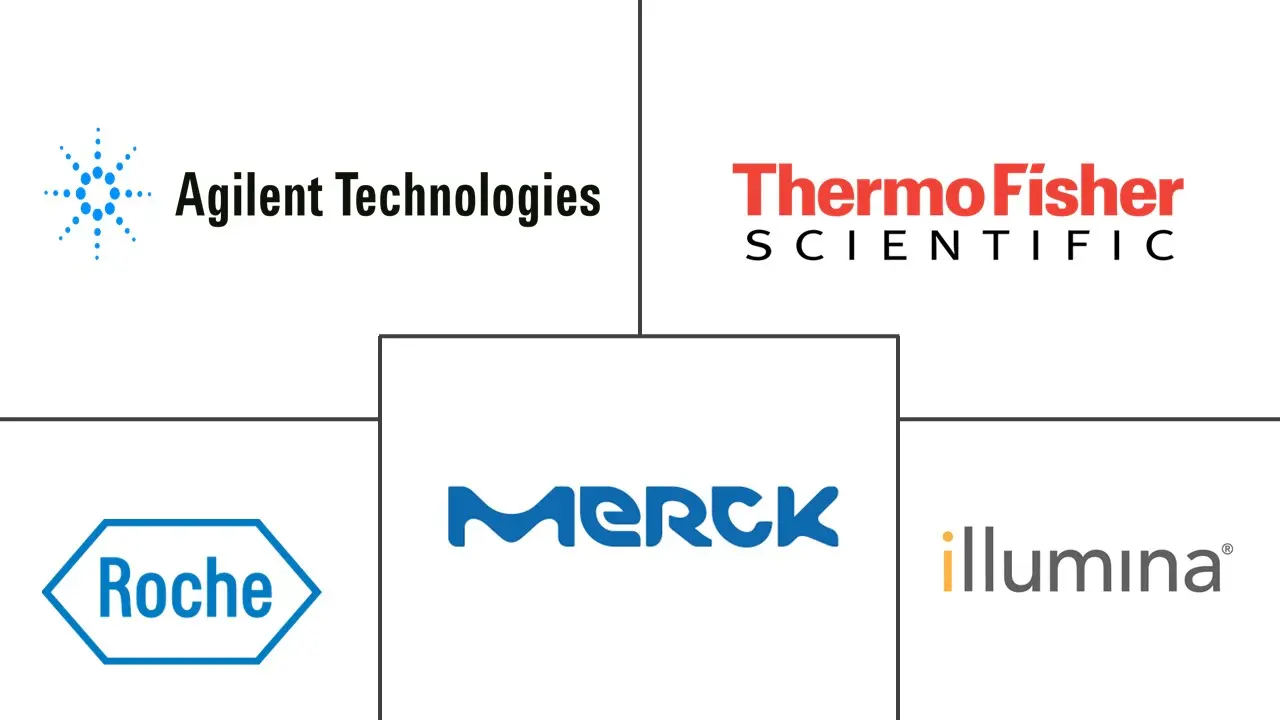Market Size of DNA Sequencing Industry

| Study Period | 2021 - 2029 |
| Base Year For Estimation | 2023 |
| Forecast Data Period | 2024 - 2029 |
| CAGR | 18.61 % |
| Fastest Growing Market | Asia-Pacific |
| Largest Market | North America |
Major Players
*Disclaimer: Major Players sorted in no particular order |
Need a report that reflects how COVID-19 has impacted this market and its growth?
DNA Sequencing Market Analysis
The DNA sequencing market was valued at USD 10,409.54 million in the base year, and it is expected to reach USD 23,885.65 million by the end of the forecast period, registering a CAGR of 18.61%.
The COVID-19 pandemic had a positive impact on the market studied, as it increased the demand for DNA sequencing technology in the development of therapeutics and diagnostics for COVID-19 infection. For example, in November 2021, the Union Minister of State for Science and Technology India announced that the Department of Biotechnology (DBT) had completed one lakh genome and DNA sequencing for COVID-19 and that five COVID-19 biorepositories with 57,000 samples had been made available to academia and industry for R&D and product development. Hence, owing to the increasing DNA sequencing-based R&D activities in the development of diagnostic tools or effective therapeutics for COVID-19, the market is likely to continue its significant growth during the forecast period.
Certain factors driving market growth include advances in DNA sequencing technology, increased applications in clinical diagnosis and drug discovery, and increased R&D investments. DNA sequencing has applications in diagnostics, personalized medicine, biomarkers, forensics, reproductive health, and other areas. DNA sequencing technology holds great potential in clinical R&D of cancer diagnostics and therapeutics. Recently, next-generation sequencing (NGS) technology has demonstrated its capacity as a high-throughput and affordable approach to identify and characterize clinically actionable genetic variants across numerous genes at an exceptional speed in a single test. According to a research article published in the Journal of Pure and Applied Microbiology in June 2022, DNA sequencing methods have evolved throughout time to be employed in clinical diagnostic laboratories and research labs to produce high-quality results. It aids in the identification of new targets for therapy and diagnosis, broadening the horizon for patient care. Therefore, the increasing application of DNA sequencing in clinical diagnosis and drug discovery is expected to drive market growth over the forecast period.
The technological advancements in sequencing, from 2D sequencing in the 1970s to DNA sequencing, have come a long way. In recent years, platforms such as Illumina/Solexa, ABI/SOLiD, 454/Roche, and Helicos have provided unique prospects for high-throughput functional genomic research. Furthermore, the increased launch of technologically advanced DNA sequencing platforms is expected to propel market growth. For instance, in December 2021, Singular Genomics Systems, Inc. announced the commercial release of the G4, the benchtop sequencer. The NGS platform uses revolutionary high-performance chemistry and advanced engineering to provide precision, flexibility, speed, and power for a variety of applications, including oncology and immunology research.
Moreover, growing R&D activities are expected to raise demand for DNA sequencing due to its role in drug discovery and development. For instance, in July 2022, a genomics startup in California raised USD 600 million in funding to deliver a USD 100 whole human genome using its new high-throughput, low-cost sequencing platform.
Thus, all the above-mentioned factors are expected to propel the growth of the market. However, the interpretation of complex data and the lack of skilled professionals may restrain the market growth over the forecast period.
